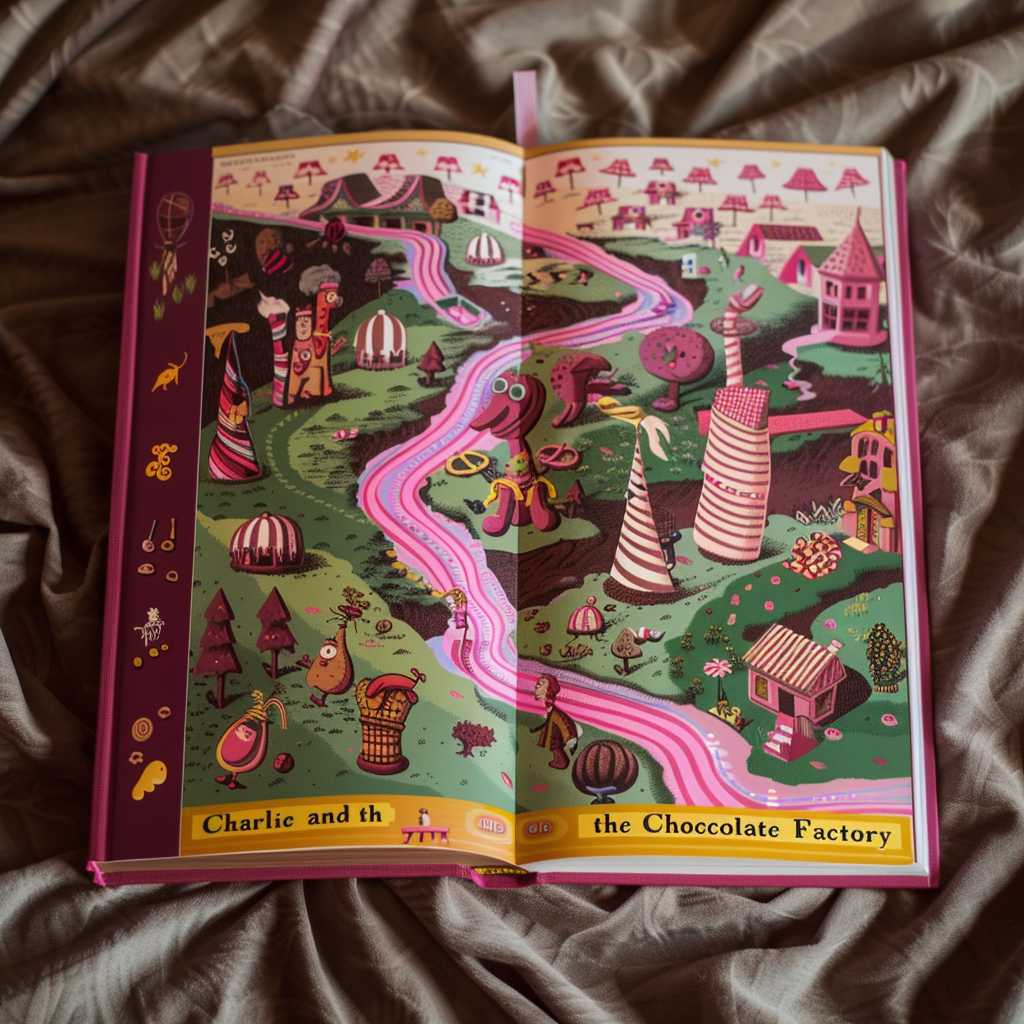Unwrapping the Magic of Charlie and the Chocolate Factory: A Timeless Tale of Confectionery Wonders
Introduction to a Candy-Coated Classic
Charlie and the Chocolate Factory is a celebrated work of children’s literature that has captivated readers for generations. Written by Roald Dahl and first published in 1964, this book spins a tale around the young protagonist Charlie Bucket as he embarks on an extraordinary adventure within the mysterious and marvelous Willy Wonka’s Chocolate Factory. The story combines elements of fantasy with moral lessons, satire, and whimsy, set against the backdrop of Wonka’s wondrous candy empire.
A Blend of Characters and Morality
Each character in the drama plays a significant role, embodying various aspects of human nature and social morals. Willy Wonka, the eccentric candy-maker, represents a blend of ingenuity and entrepreneurial spirit coated with a pinch of madness. Charlie Bucket signifies innocence and goodness amid poverty. The other four children—Augustus Gloop, Veruca Salt, Violet Beauregarde, and Mike Teavee—each demonstrate traits such as gluttony, greed, pride, and indolence—serving as cautionary caricatures of vice.
An Odyssey through a Sugary Paradise
As the five children navigate the factory’s labyrinthine corridors filled with fantastical inventions—they each encounter different fates reflecting their own character flaws—served as both entertainment and moral education for young readers. The factory itself becomes almost a character in its own right, with vivid descriptions of chocolate rivers, edible gardens, Oompa-Loompas, and unique confections beyond anyone’s wildest imagination.
Cultural Impact and Adaptations
Dahl’s novel has not only left an indelible mark on children’s literature but also on popular culture. It has been adapted into two major films: one in 1971 starring Gene Wilder as Willy Wonka, and another one in 2005 with Johnny Depp assuming the role under director Tim Burton. These adaptations brought the story to new audiences and imprinted iconic visual interpretations upon collective imaginations while generating much debate over the fidelity to and interpretation of the source material.
Themes: A Deeper Dive into Sweet Symbolism
The rich thematic elements in Charlie and the Chocolate Factory have been analyzed by educators and critics alike. The storyline delves into topics such as ethics in capitalism, the nature of desire and excess, the-value-of family, as well as distributing justice poetic justice shaped in real-time. Dahl fashionably intertwines humor with deeper philosophical reflections about human nature through this seemingly simple children’s narrative.
Legacy: Willy Wonka’s Everlasting Influence
Decades after its initial publication, Charlie and the Chocolate Factory remains durable within global literary consciousness. It has inspired theme park attractions, merchandise lines, games, music performances—testament to its continued relevance and appeal to the child in everyone.
Notes
*Image description: A hardcover edition of Roald Dahl’s “Charlie and the Chocolate Factory” lies open showing an illustration of the chocolate factory with a river of chocolate, various candy trees surrounding it, and small figures which could be the Oompa-Loompas working in the distance.*
